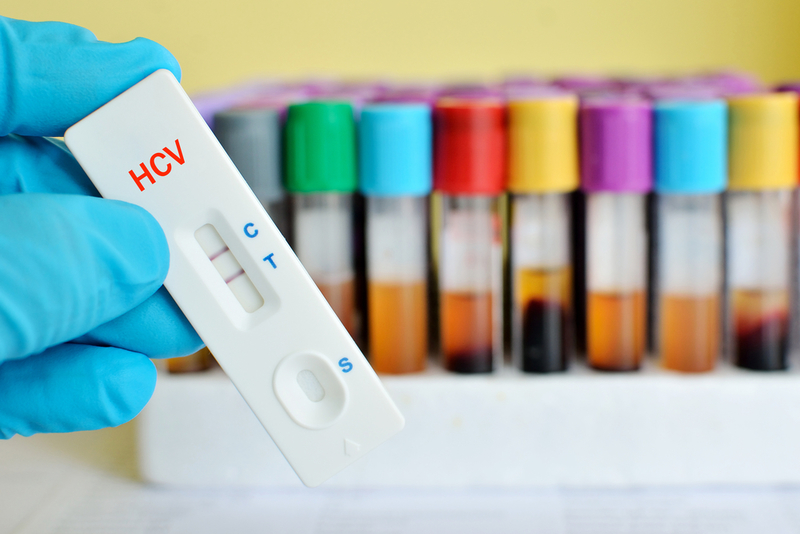Hepatitis C virus spontaneously clears in 1/3rd of people infected
M3 Global Newsdesk Oct 08, 2018
Up to 30 to 40% of patients naturally clear infection of hepatitis C virus (HCV), which is “substantially higher” than previous estimates, according to a recent article in the International Journal of Infectious Diseases.

“Having an accurate and precise estimate of HCV clearance rate is important for HCV response, and will inform HCV treatment in early infection, planning of health services provision, and estimation and projections of HCV chronic infections and disease burden,” wrote authors led by Laith J. Abu-Raddad, PhD, Infectious Disease Epidemiology Group, Weill Cornell Medicine-Qatar, Doha, Qatar.
Earlier studies have pegged the number of people who naturally beat HCV between 10% and 15%. More recent longitudinal studies have yielded a wide range of clearance rates between 0% and 57% from 6 to 48 months post-infection, with the best estimate of approximately 25% at 16.5 weeks.
“These studies have also indicated that infection clearance is predicated on a complex interplay of host and virus factors such as female sex, IL28B CC genotype, and HCV genotype 1, among others,” the authors wrote.
Cohort studies may provide a direct way to measure HCV clearance, but this approach is hampered by limitations and potential bias. Differences in study design, population, sample size, follow-up duration, analysis method, and inclusion criteria make it challenging to interpret and compare such studies. In addition, previous researchers have tended to recruit HCV subjects who are symptomatic or viremic at baseline—such as intravenous drug abusers and post-transfusion patients—although most people with HCV are asymptomatic.
Another point of contention with respect to previous studies involves the discrepancies in case definition and testing, which can underestimate HCV clearance rate and yield wide-ranging estimates based on the same data.
“We present here a novel approach to estimate HCV clearance rate (fclearance)—defined as the proportion of HCV infected persons who spontaneously clear their infection after the acute stage of infection,” the authors wrote. “This approach also clarifies the subtle link between fclearance and HCV viremic rate, with the latter being defined as the proportion of individuals who are HCV antibody (Ab) positive and HCV RNA positive, out of all who are HCV Ab positive regardless of RNA status, as measured in a given cross-sectional survey.”
The investigators considered how HCV natural history at the individual level presents at the population level. They employed probability-based and population-level data from the United States (the National Health and Nutrition Examination Surveys, NHANES A and NHANES B, gathered between 1999 and 2012) and from Egypt (Egypt Demographic and Health Surveys, EDHS 2008 and EDHS 2015) to develop mathematical models and simulations of infection to approximate HCV clearance rates at the population level. This indirect approach decreased limitations and bias and was akin to a population-level cohort study.
Using this method, the researchers found that HCV clearance rates in these population-based studies ranged between 29.6% and 39.9%. Dr. Abu-Raddad and colleagues also determined that the HCV viremic rate was linearly related to fclearance, with the HCV viremic rate higher in individuals with higher exposure risk.
Importantly, HCV viremic rates from high-risk populations, such as intravenous drug users, could not be used to approximate population-wide HCV viremic rate. However, HCV viremic rates among low-risk populations, such as pregnant women and blood donors, more closely represented the population-wide HCV viremic rate.
The authors verified the robustness of their results using uncertainty and sensitivity analyses.
The team noted limitations of their work. First, they made certain assumptions to capture the complex nuances of HCV dynamics. Second, they did not assess treatment coverage for subjects with chronic HCV.
The investigators posited that their findings “may hint that a strategy for HCV vaccine development could be a vaccine that does not necessarily prevent infection, but modulates immune response towards conditions that increase the capacity of the host immune system to clear HCV infection spontaneously.”
This study was supported by the Qatar National Research Fund (a member of Qatar Foundation).
This story is contributed by Naveed Saleh and is a part of our Global Content Initiative, where we feature selected stories from our Global network which we believe would be most useful and informative to our doctor members.
-
Exclusive Write-ups & Webinars by KOLs
-
Daily Quiz by specialty
-
Paid Market Research Surveys
-
Case discussions, News & Journals' summaries